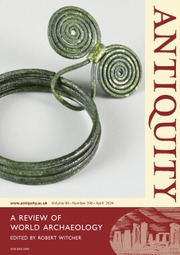No CrossRef data available.
Article contents
Human intent and cultural lineages: a response to Bentley & O'Brien
Published online by Cambridge University Press: 29 October 2024
Extract
I thank Bentley and O'Brien (2024) for their cogent review of issues associated with inheritance and intention in cultural evolution. Intent is, of course, present in cultural process and that begs the question as to when and how we concern ourselves with it as a factor in cultural evolution (Rosenberg 2022). Intent underlies our understanding of both micro- and macro-scale processes of cultural evolution. Lamarckian microevolutionary process depends on decision-makers choosing whether or not to accept and sometimes alter cultural traits (Boyd & Richerson 1985). Zeder (2009, 2018) points out that even long-term change may be affected by conscious infrastructural investments that alter capacity for socioeconomic production and, subsequently, canalise later developments.
- Type
- Debate Response
- Information
- Copyright
- Copyright © The Author(s), 2024. Published by Cambridge University Press on behalf of Antiquity Publications Ltd


